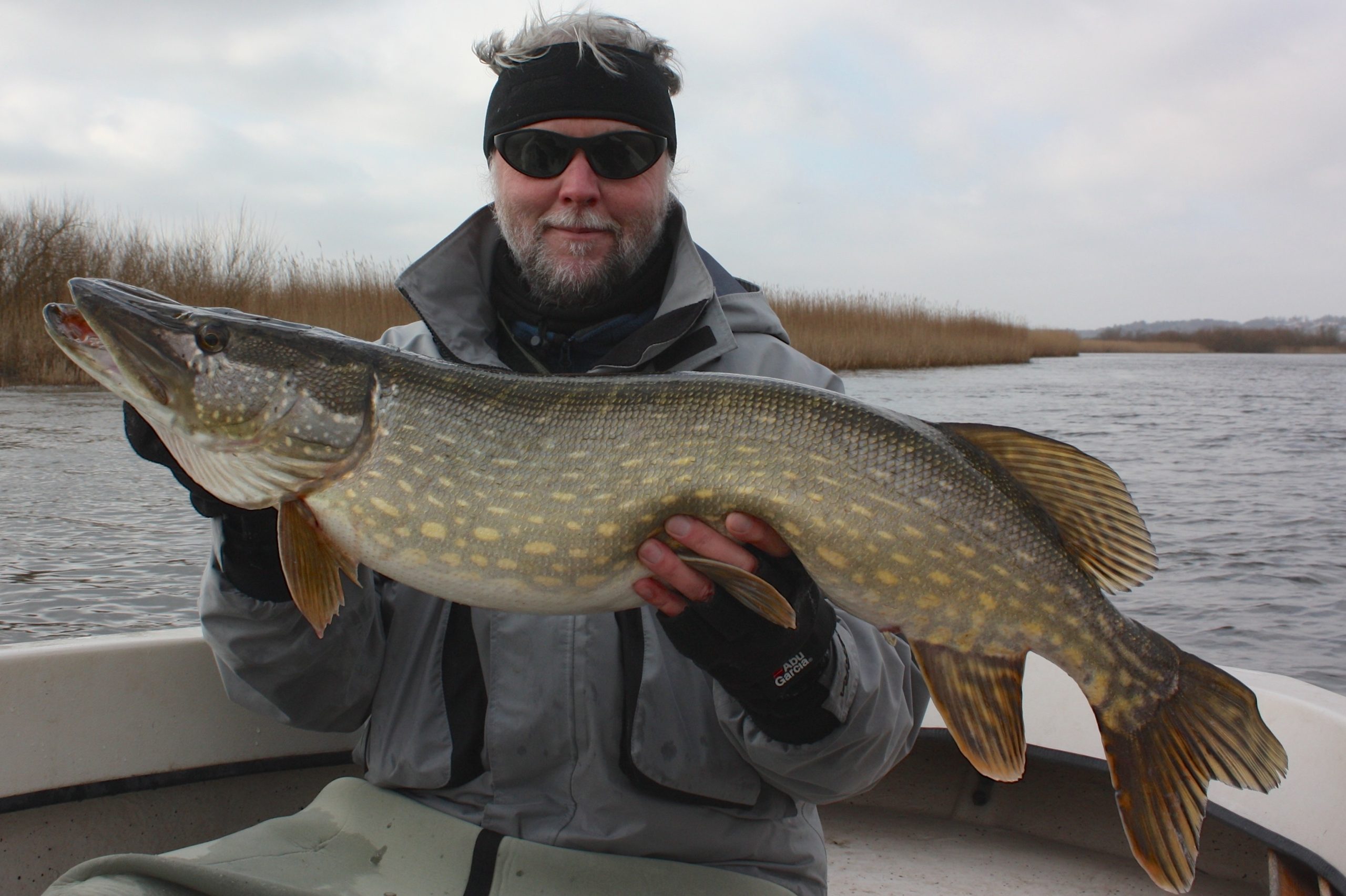End of season salmon
November 15 marks that the end of season in the rivers of East Jutland. So if you want to catch a salmon or sea trout in one of our rivers, now is the time to do it. The fish are there in good numbers!
The River Guden has had yet another great season with some anglers bringing home several good-sized salmon. Most of the fish are of course 2-3 kg grilse but good numbers of one-seawinter salmon in the 5-6 kg class have been caught this year. Finally a number of fish have exceeded the magic 10 kg barrier.
Both salmon and seatrout are caught by fly fishing, spinning or baitfishing. If you prefer fly or spinner, both artificials should be fished deep and slowly to entice the coloured fish that no longer have any striking reflexes left from the ocean. Both fly and spinner should be large and gaudy to attract attention from aggressive prespawning fish!
Many dedicated salmon fishermen stick to bait and choose fresh shrimp that are mounted on special rigs. Obviously these shrimp remind salmon of their feeding in the depths of the North Atlantic. At least it is a fact that you primarily catch salmon when you bait your hooks with shrimp. Seatrout much prefer worms!
Pikeperch in clear water
It is about high season for pikeperch in the lakes of East Jutland. This very tasty but also tricky and unpredictable fish with its characteristic “marble eyes” really thrives in the cold waters of November where frost has killed off a large percentage of the algae, making for clearer water.
All predatory fish species benefit from the less turbid water but especially the pikeperch feeds voraciously now and may again be caught on artificial baits that it had no chance of seeing earlier on in the algae infested waters of summer. Now trolling again becomes a productive way of fishing – and an interesting one.
Large Rapala and Bomber wobblers are good bets for artificial baits in November, red and white Hi-Lo wobblers also. The latter may be adjusted to fish high or deep in the water depending on prevailing conditions. Typically pikeperch stay in deep waters during the hours of daylight. When the sun sets they move into shallower waters or rise towards the surface to feed. Adjust your wobbler accordingly and catch fish!
Julsø, Brassø and Lake Borre are amongst the favourites when it comes to pikeperch fishing in the Lake District of East Jutland.
Seatrout in search of brackish waters
Water temperature is now getting closer to the point where seatrout in saltwater do not like it any more. Those immature seatrout that haven’t already left the ocean for the freshwater and spawning grounds of the rivers now start looking for the brackish waters of the secluded bays.
Fish that have been stocked on open shorelines with no rivers in the immediate vicinity typically return to the place of stocking when they become sexually mature. Often you may see coloured fish jump clear out of the water on quiet days spotting a mirror-calm surface. These fish are usually difficult to catch – unless you fish with small drab coloured flies on long leaders with light tippets.
The Bay of Mariager is a good bet for saltwater seatrout in the cold of November. At the bottom end of this long and narrow bay you will encounter silvery and immature seatrout as well as dark fish preparing for spawning. The latter are illegal prey from November 16 until January 16 and must be released unharmed no matter how big. Only silvery seatrout with loose scales and exceeding 40 cm may be taken.
The Bay of Kalø at the northern end of the Bay of Aarhus is yet another good spot for overwintering seatrout in the salt. Along the open shores of Djursland seatrout are getting scarcer as most fish have now left the salty ocean and entered the Channels of Kolindsund or the River Guden further up north.
Coastal cod on the prowl!
Coastal cods are in peak condition in November. They are well fed and preparing themselves for the spawning season ahead by feeding voraciously on anything that moves. They typically start spawning sometime after New Year, depending on locality, salinity and water temperature.
The coastal waters of November usually have a temperature that suits cod just perfect. Therefore they move into really shallow water where they gorge themselves on tiny fish and crispy crustaceans. As always crabs are very high on the list! Really large cod seldom move into shallow water, no matter the temperature. Instead they stay in deeper waters where you need a boat to get in touch with them.
Quite often you will experience days where cod are not the least interested in the silvery pirks and spoons normally used. On days like that you should search your tackle box for artificial baits in red, orange and yellow colours – preferably small flies or supersoft jig tails that are often taken eagerly by the very same cod that completely ignored your larger pirks and spoons!
In the waters between Hjelm, Sletterhage and Samsø you can normally find cod that are willing to cooperate. They make for some great eating when back home in your kitchen.
© 2023 Steen Ulnits


Del denne artikel: